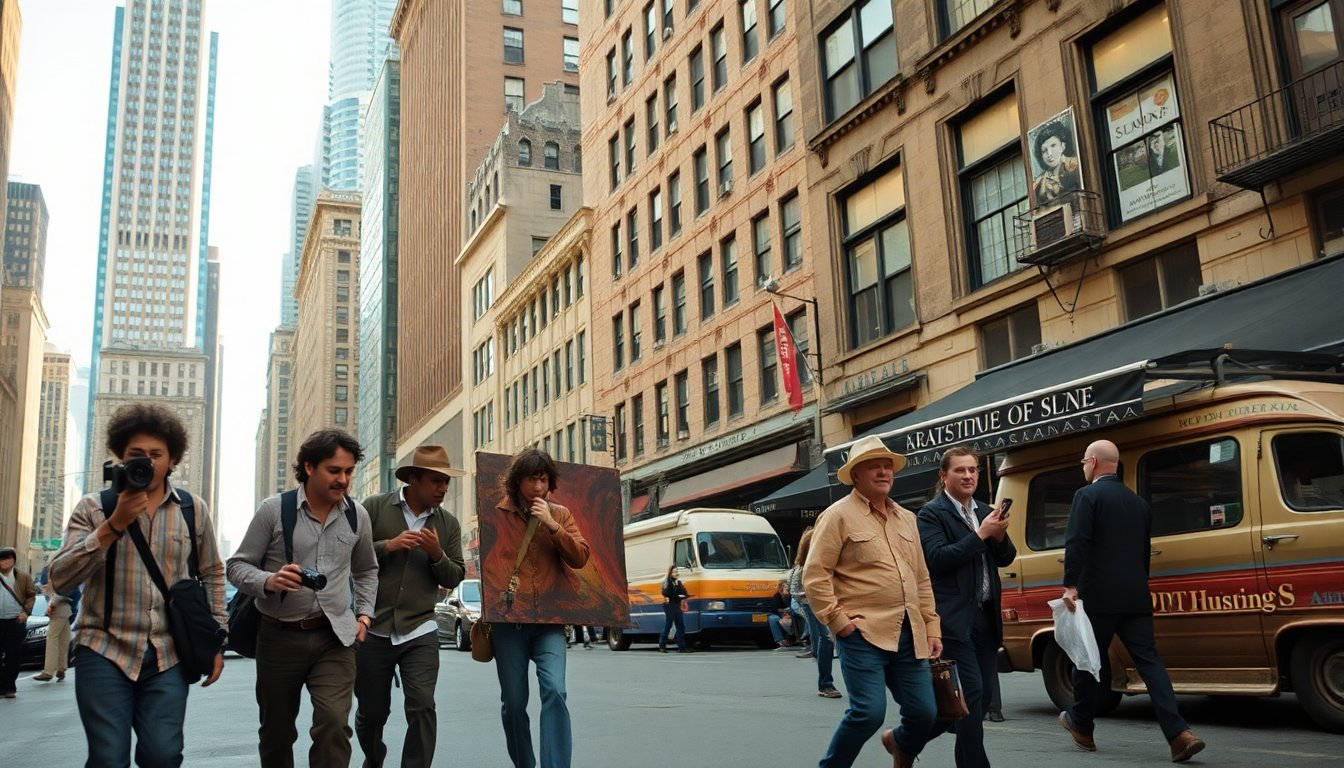Table of Contents
Cinematographic revival in New York City
The cinematographic landscape of New York City in the 1970s and 80s is vividly captured in Ira Sachs’ latest film, Peter Hujar’s Day. This narrative not only highlights the life of renowned photographer Peter Hujar but also explores the deep connections he fostered during a transformative era in the art scene. Premiering at the Sundance Film Festival and gaining recognition at the Berlin International Film Festival, the film serves as a tribute to the intricacies of life and the everyday details that shape our experiences.
A closer look at Peter Hujar’s life
Ben Whishaw stars as Peter Hujar, a photographer whose artistic vision was shaped by the dynamic cultural landscape of his era. Although he collaborated with influential figures such as Andy Warhol and Susan Sontag, Hujar’s work remained largely unrecognized until later in his life. This reflects the often-overlooked challenges faced by artists battling societal apathy. His photography, particularly its emphasis on the queer community, captures a vibrant yet ephemeral world that has largely disappeared.
The essence of Hujar’s artistry
The film by Sachs is inspired by a pivotal conversation between photographer David Hujar and writer Linda Rosenkrantz that occurred on December 19, 1974. This recorded dialogue serves as the foundation of the narrative, inviting viewers to delve into the intricacies of Hujar’s everyday life. The film’s title reflects Rosenkrantz’s endeavor to document the ordinary yet profound moments that define our existence, a theme that resonates strongly with audiences today.
The film’s structure and themes
Peter Hujar’s Day features a minimalist two-actor format that delves into themes of friendship, creativity, and the passage of time. Set mainly in Rosenkrantz’s intimate apartment, the film creates a reflective atmosphere where characters can reconnect and share memories. The absence of external distractions enhances their bond, allowing audiences to appreciate the beauty in ordinary interactions.
Artistic choices that enhance the narrative
Shot on 16mm film, the film’s visual aesthetic pays tribute to classic cinema while reflecting the essence of Hujar’s photographic style. Cinematographer Alex Ashe uses natural light and careful compositions that align with Hujar’s artistic sensibilities. This approach invites the audience to engage with the nuanced dynamics of the characters’ conversations, which blend nostalgia, humor, and vulnerability. The film emphasizes the depth of dialogue, as characters explore themes of life, art, and the complexities of love.
Critical reception and significance
The film has received acclaim for its sensitive portrayal of David Hujar’s life, effectively capturing the essence of a past era. Critics highlight that director Ira Sachs skillfully reflects the social and cultural dynamics of the time, transforming the film into not just a biopic but a broader commentary on the fragility of existence and the relationships that shape our lives. The narrative intertwines the personal and the universal, encouraging viewers to reflect on their experiences through Hujar’s story.
As the narrative progresses, it illustrates how Hujar’s observations reveal profound truths about the human condition. His candid reflections offer insight into the challenges artists face while pursuing their passions amid societal pressures. The dialogues, infused with humor and melancholy, resonate with anyone navigating the complexities of friendship and artistic ambition.
Peter Hujar’s Day serves as a powerful tribute to an artist whose influence remains significant. The film, directed by Sachs, emphasizes the subtleties of daily life, prompting viewers to recognize the profound effects of relationships and the often-overlooked moments that shape our experiences. By honoring Hujar’s legacy, the film encourages audiences to reflect on their own stories and the connections that define them.


